Abstract
Johnston, M. A. (Cornell University, Ithaca, N.Y.), and E. A. Delwiche. Isolation and characterization of the cyanide-resistant and azide-resistant catalase of Lactobacillus plantarum. J. Bacteriol. 90:352–356. 1965.—Lactobacillus plantarum T-1403-5 has been shown to possess a very active cyanide- and azide-resistant catalase. By means of fractional ammonium sulfate precipitation, removal of nucleic acids with protamine sulfate, adsorption on calcium phosphate gel, and pH gradient chromatography on diethylaminoethyl cellulose, the catalase “activity” was purified approximately 14-fold. The purified enzyme preparation was insensitive to the heme poisons cyanide and azide, the metal chelating agents ethylenediaminetetraacetate and o-phenanthroline, and the sulfhydryl binding agent p-chloromercuribenzoate. The purified enzyme moved at a uniform rate in the electrophoretic field (isoelectric point, pH 4.7). The ultraviolet-light absorption spectrum was negative for heme-iron components, and fluorescence measurements yielded negative results with regard to flavin components. Acriflavin and Atabrine had no effect on enzyme activity. The nonheme catalase displayed a much broader pH range of activity than the heme-iron catalase of a control culture of Escherichia coli and the azide-sensitive catalase developed by L. plantarum NZ48 when grown in the presence of preformed hematin. The nonheme catalase was more resistant to heat inactivation. No retention of the enzyme on a chromatographic column could be obtained with Sephadex 200, nor could the enzyme be separated from crystalline beef-liver catalase by the gel filtration technique. Sedimentation was obtained in a centrifugal field of 144,000 × g for 12 hr.
Full text
PDF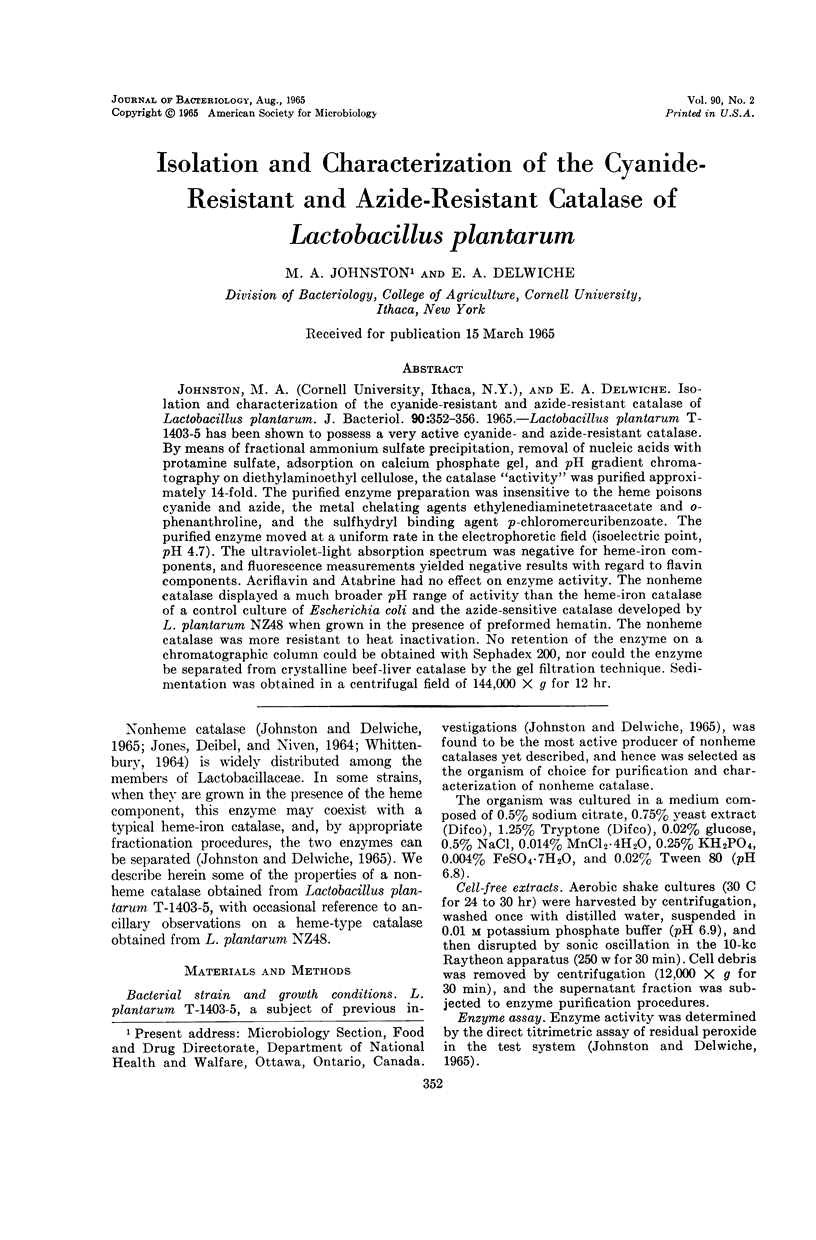
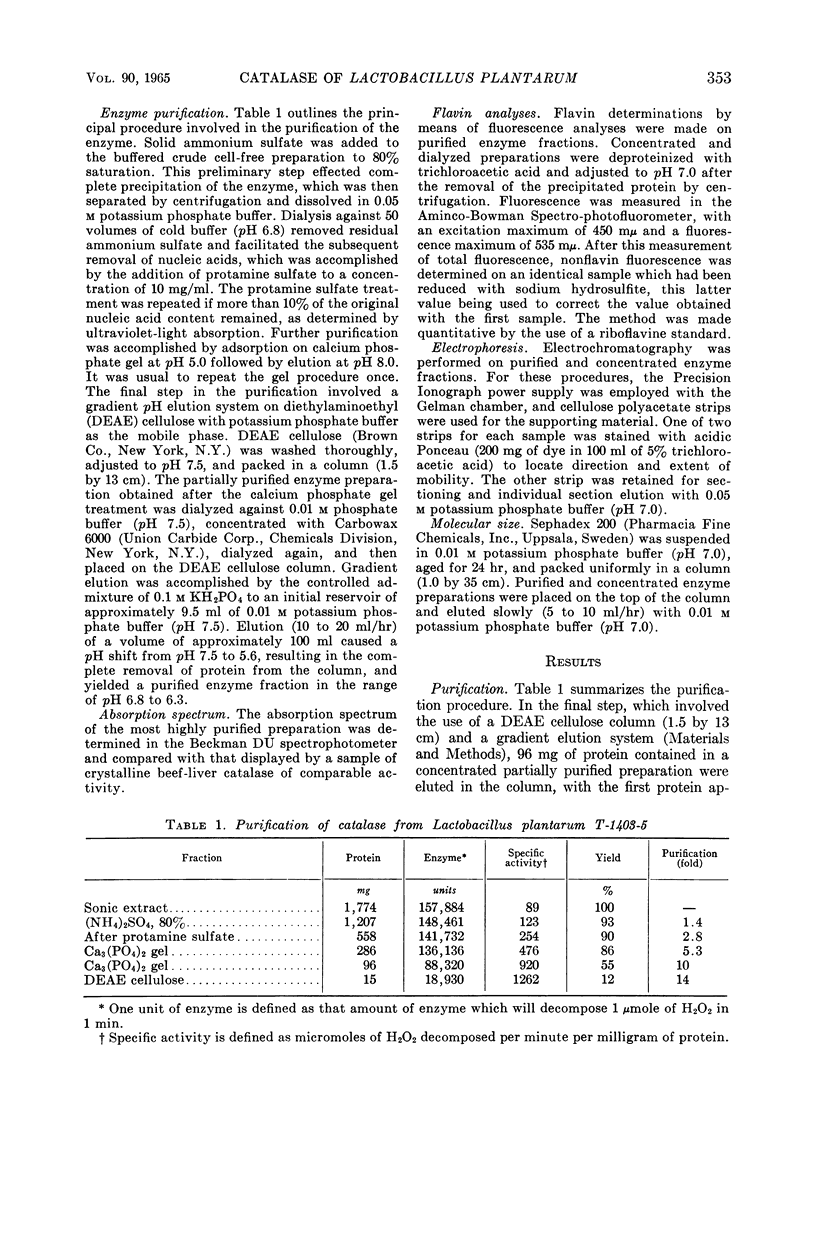
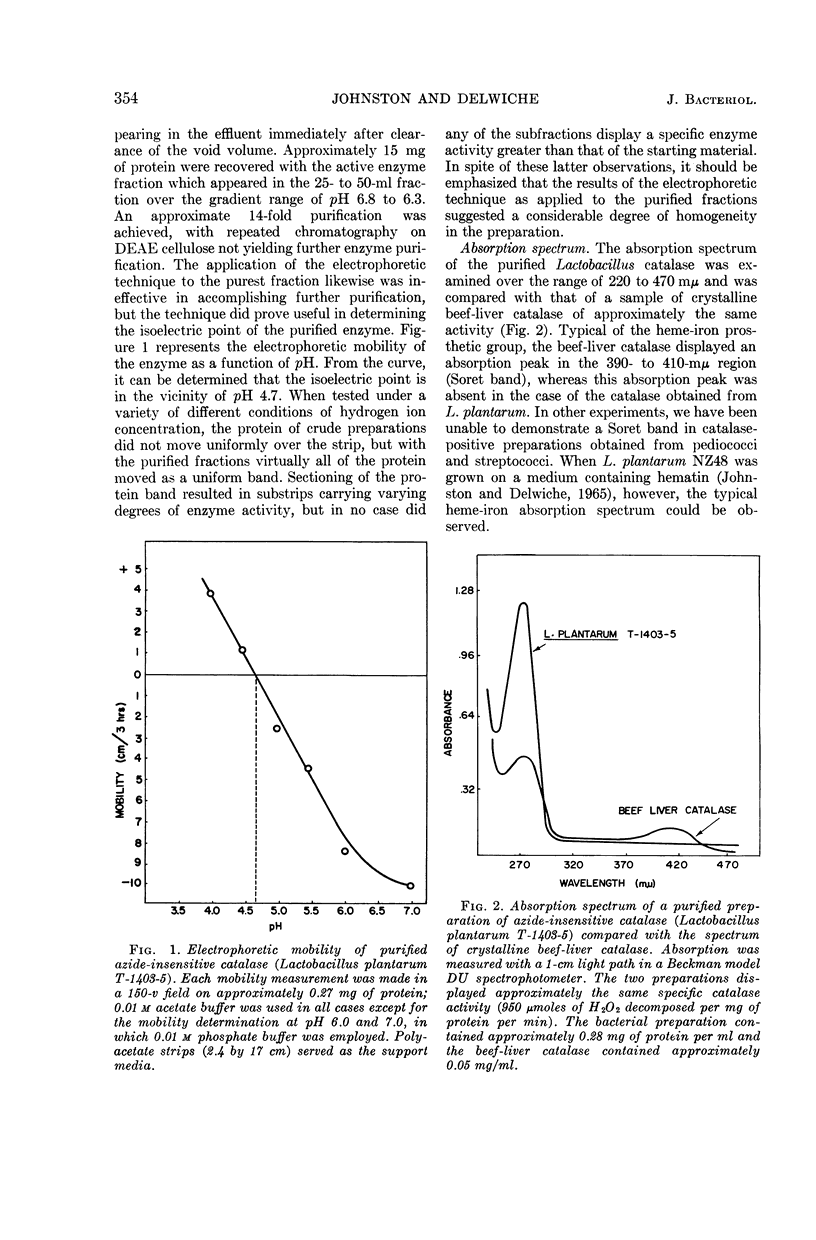
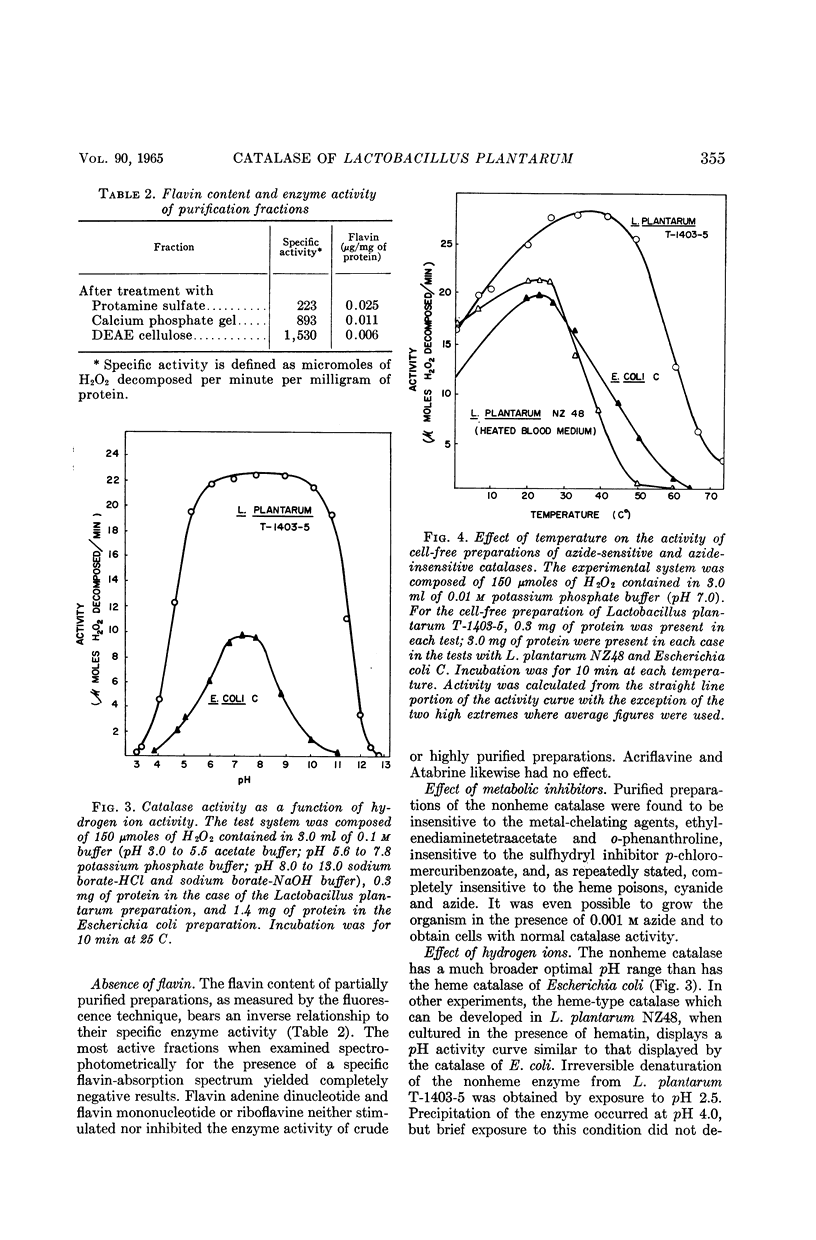
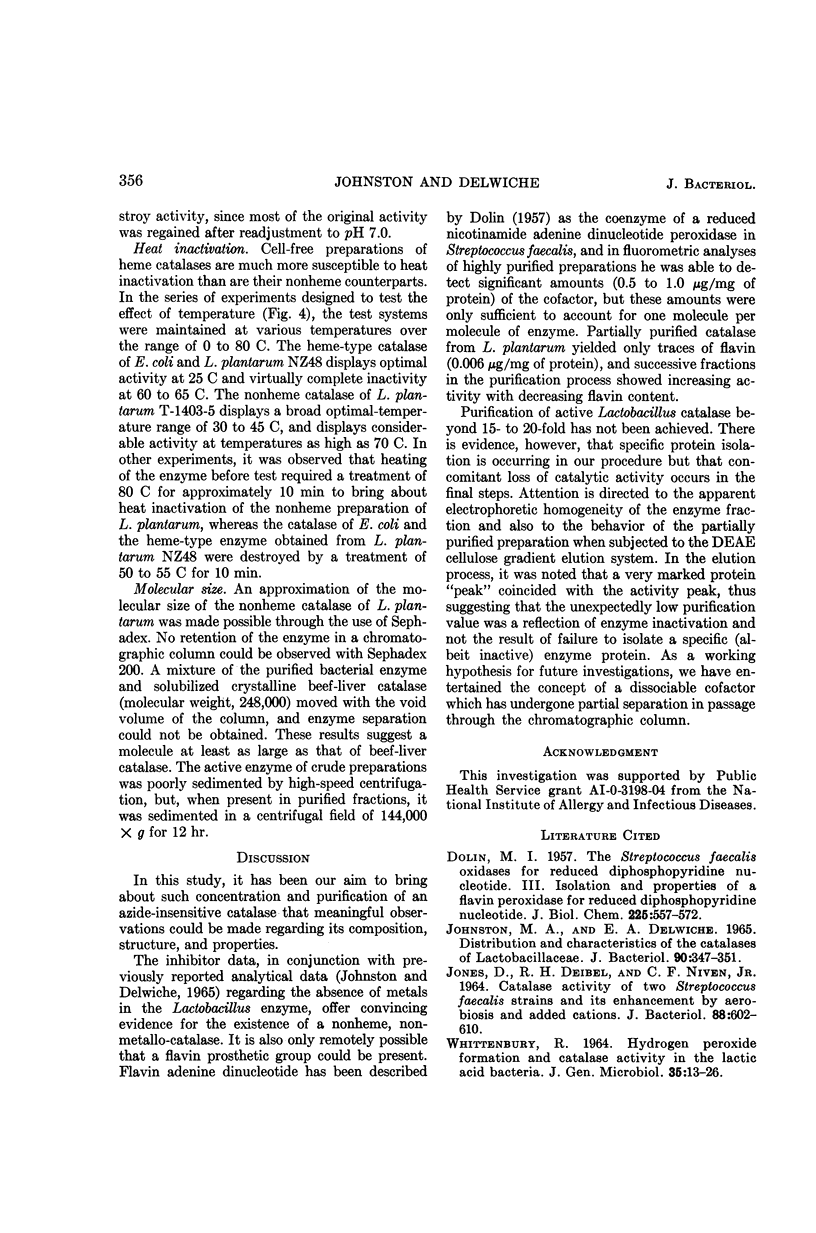
Selected References
These references are in PubMed. This may not be the complete list of references from this article.
- DOLIN M. I. The Streptococcus faecalis oxidases for reduced diphosphopyridine nucleotide. III. Isolation and properties of a flavin peroxidase for reduced diphosphopyridine nucleotide. J Biol Chem. 1957 Mar;225(1):557–573. [PubMed] [Google Scholar]
- JOHNSTON M. A., DELWICHE E. A. DISTRIBUTION AND CHARACTERISTICS OF THE CATALASES OF LACTOBACILLACEAE. J Bacteriol. 1965 Aug;90:347–351. doi: 10.1128/jb.90.2.347-351.1965. [DOI] [PMC free article] [PubMed] [Google Scholar]
- JONES D., DEIBEL R. H., NIVEN C. F., Jr CATALASE ACTIVITY OF TWO STREPTOCOCCUS FAECALIS STRAINS AND ITS ENHANCEMENT BY AEROBIOSIS AND ADDED CATIONS. J Bacteriol. 1964 Sep;88:602–610. doi: 10.1128/jb.88.3.602-610.1964. [DOI] [PMC free article] [PubMed] [Google Scholar]
- WHITTENBURY R. HYDROGEN PEROXIDE FORMATION AND CATALASE ACTIVITY IN THE LACTIC ACID BACTERIA. J Gen Microbiol. 1964 Apr;35:13–26. doi: 10.1099/00221287-35-1-13. [DOI] [PubMed] [Google Scholar]


